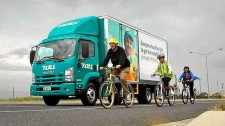Sorry to be annoying but there are a few things I can’t tell you in this post – such as who, where and when. And I can’t show you any pictures. But I can tell you what.
Last week, having done a respectable few road miles including a surprising 20% climb, I caught the train.
Opposite me was a guy who looked about the same age and he had a well-appointed 29er. He told me where he’d ridden from that day and I suggested it was about 80 miles away.
He looked blank and said he hadn’t done the sums but yes, it had been off-road all the way. He was training.
He was a little disappointed with his training ride because he’d been trying to keep his average speed down to 7.3 mph but hadn’t got it below 7.8 mph.
Most of us train to cycle faster so what kind of training, I asked, involves trying to keep your average speed down?
Long distance, he said.
How long is long distance? I asked.
400 miles, he said.
Off road, he said.
Non-stop, he mumbled.
Right, I said.
“Are you insane?” I thought, but didn’t utter.
Some time soon he’s going to spend 52 hours pedalling, while eating, drinking and sleeping, his way across 400 miles of rough tracks, up thousands of feet of ascents and down thousands of feet of descents. He’s going to do it because it’s not been done before and he likes a challenge. He might not succeed.
Either way, at some point soon, I’ll be able to tell you more, about who he is, where he was riding, when and how he got along.
Until then, I’m going to respect his modesty and his own, mistaken, belief that nobody would be interested in him.
But please, even though you don’t know much at all about his inhuman escapade, do wish him luck. That’s the least he deserves.





